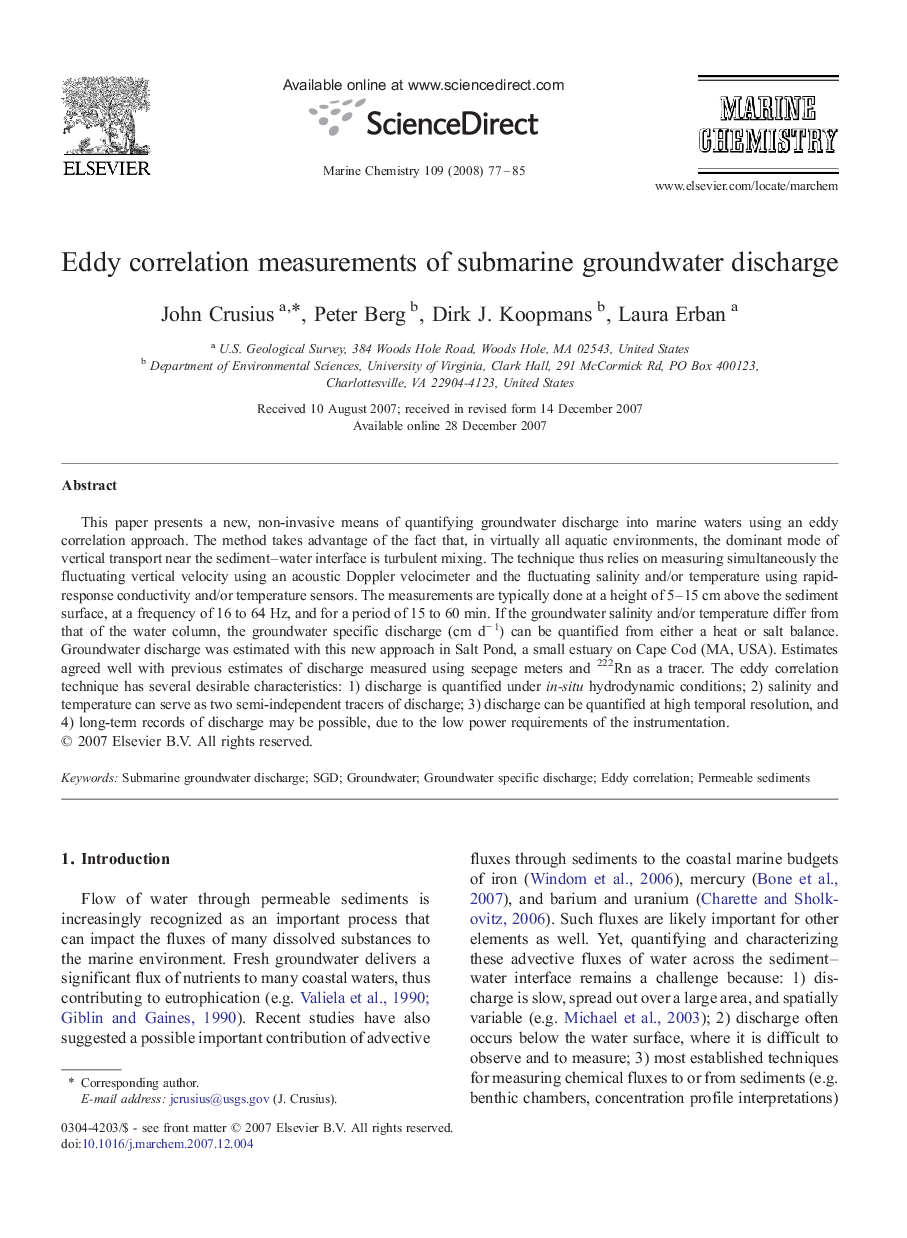| Article ID | Journal | Published Year | Pages | File Type |
|---|---|---|---|---|
| 1262388 | Marine Chemistry | 2008 | 9 Pages |
This paper presents a new, non-invasive means of quantifying groundwater discharge into marine waters using an eddy correlation approach. The method takes advantage of the fact that, in virtually all aquatic environments, the dominant mode of vertical transport near the sediment–water interface is turbulent mixing. The technique thus relies on measuring simultaneously the fluctuating vertical velocity using an acoustic Doppler velocimeter and the fluctuating salinity and/or temperature using rapid-response conductivity and/or temperature sensors. The measurements are typically done at a height of 5–15 cm above the sediment surface, at a frequency of 16 to 64 Hz, and for a period of 15 to 60 min. If the groundwater salinity and/or temperature differ from that of the water column, the groundwater specific discharge (cm d− 1) can be quantified from either a heat or salt balance. Groundwater discharge was estimated with this new approach in Salt Pond, a small estuary on Cape Cod (MA, USA). Estimates agreed well with previous estimates of discharge measured using seepage meters and 222Rn as a tracer. The eddy correlation technique has several desirable characteristics: 1) discharge is quantified under in-situ hydrodynamic conditions; 2) salinity and temperature can serve as two semi-independent tracers of discharge; 3) discharge can be quantified at high temporal resolution, and 4) long-term records of discharge may be possible, due to the low power requirements of the instrumentation.
